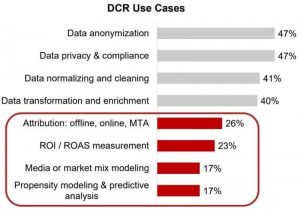Leadership is often viewed as synonymous with influence. In many cases, the legacy of a great leader is their ability to get buy-in from different stakeholders Unfortunately, many leaders often rely on the same proven strategies that have helped them succeed in the past, which can make it difficult for them to connect, adapt, and deliver.
The 4 Most Effective Influencing Styles
Successful leaders have more than one way to change people’s behavior and/or their minds in order to convince team members to carry out requests and gain their commitment regarding key initiatives. Some of these influencing models are more effective than others because they don’t rely heavily upon authority to be successful. While many leaders tend to favor one style over the others, the most effective leaders understand how to apply the right influencing approach, in the right context, at the right time.
Influencing Style Examples
- Reasoning: Using data and facts to show why a proposal is relevant or necessary. A leader could explain that the draft of a document must be completed by the end of the week because it must go through copyediting and design the following week in order to make a publication deadline by month’s end.
- Inspiring: Appealing to a team member’s values and ideals to generate enthusiasm for carrying out a task. If a team is working to develop a new software application, a leader could motivate them to finish the project by pointing out how they’ve succeeded in the past and reminding them of what the product’s success will mean for the company’s future.
- Consulting: Gathering input or suggestions from others and using that input to shape a proposal or idea to increase their ownership of a proposal. As the team is getting underway with a new project, a leader may ask the team members who have worked on similar projects in the past to offer recommendations on the best way to proceed based on their knowledge and experience.
- Collaborating: Providing relevant support and resources to make it easier for others to carry out a request. If team members are struggling to meet a deadline, a leader could ask them what tasks could be handed off to another department so they can focus on the most important elements of the project.
Moving Beyond Your Primary Influencing Style
Educate leaders
Although most leaders have an intuitive understanding of influence and recognize its importance, they may not be fully aware of the many different ways influence can be deployed. By using learning and development tools such as videos, online courses, and interactive simulations, leaders can familiarize themselves with new approaches to influencing that they may not have used in the past. They can also get feedback as they practice using these styles to get a sense of which ones are a good fit for them and which ones they need to develop further.
Build relationships
Influencing isn’t something that takes place in an isolated moment. No matter what influencing style a leader deploys, their efforts are unlikely to be successful if they don’t spend a significant amount of time building the relationships that allow them to make requests. Leaders must establish both credibility and trust with their teams well in advance of trying to influence a team member. If they wait to lay this foundation until they need something done, any influencing strategy they utilize will be less effective.
Encourage agility
Leaders are naturally drawn to what has worked for them in the past, which is why most people rely too heavily upon one form of influencing. In most cases, they utilize the style that is most natural for them. For many leaders, reasoning is usually the most commonly used technique because it has the appearance of objectivity and allows them to separate themselves from the request by relying purely on data. But too much reliance upon reasoning may leave leaders ill-equipped to handle a situation where information is sparse or inconclusive or when others have equally compelling data to support their point of view. If they haven’t made efforts to influence people without using data-driven logic, they might struggle to direct their teams in situations where information is sparse or inconclusive. Leaders need to be willing to think about alternative approaches to obtaining the commitment they need rather than clinging to the same strategy in all cases.
Sometimes situational context provides leaders with an opportunity to deploy a different influencing style. Perhaps there is enough lead-in time on a project to use consulting as a way of securing stronger buy-in. When a leader has resources available that could prove helpful, there is little sense in withholding them for some situation in the future when they could be used as part of a collaborative influencing strategy. Some strategies are a natural fit for a situation, so using different approaches in different contexts can encourage leaders to break their patterns and try new techniques.
Learn what motivates others
Not every person reacts to influencing styles in the same way. Some people might love being a part of decision making, but tune out any attempts to inspire them. Others may not respond well to reasoning because they believe that data is being used to invalidate their feelings about a situation. Here is where building a relationship with team members is so important. By understanding what motivates people and getting a sense of how they react to conflict and pressure, leaders can adjust their influencing styles to those characteristics to engage them and get the best possible results from their teams.
Using influence in the workplace is one of the most important expectations placed upon a leader. The best leaders recognize what motivates each member of their team, understands the goals of their organization, and is able to determine which influencing styles model should be applied in a given situation to produce the best results. Relying on only one influencing style may help leaders produce results in certain contexts, but it prevents them from adapting to changing circumstances and getting the most out of their teams. Fortunately, with the right training, team-building effort, and situational awareness, leaders can become more effective overall influencers.
Business & Finance Articles on Business 2 Community
(25)






